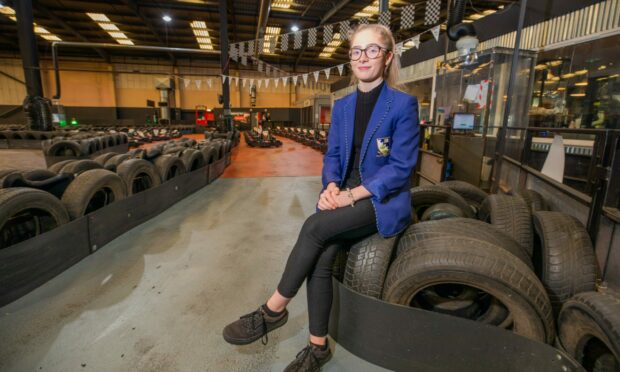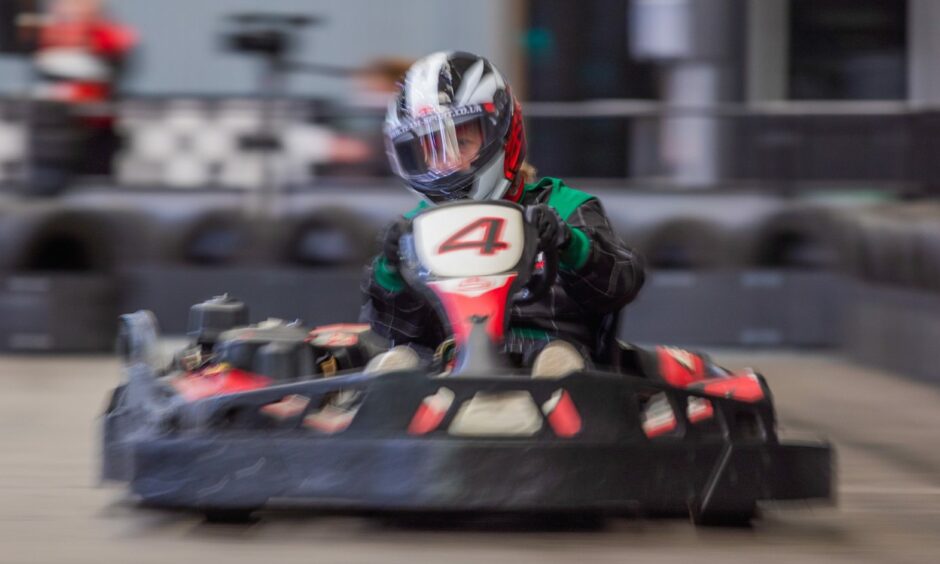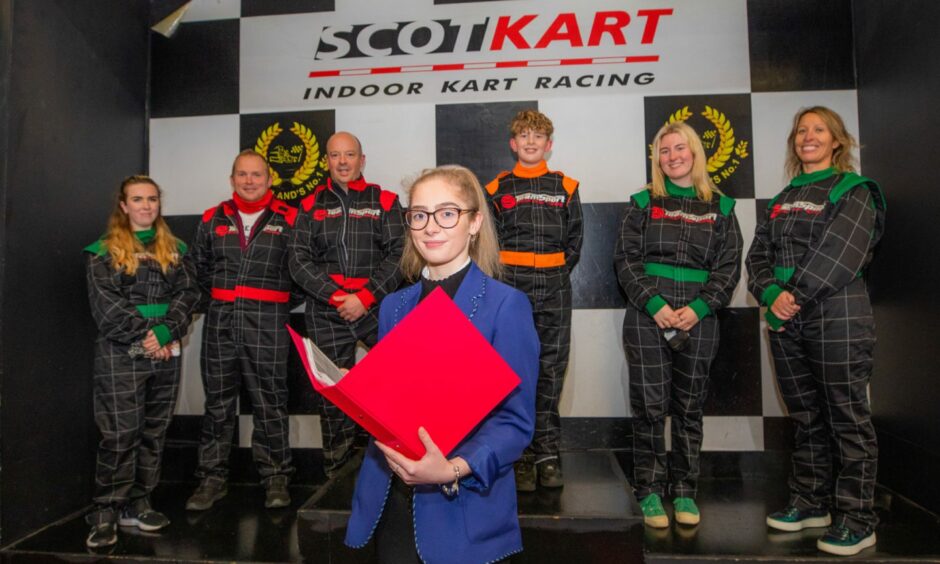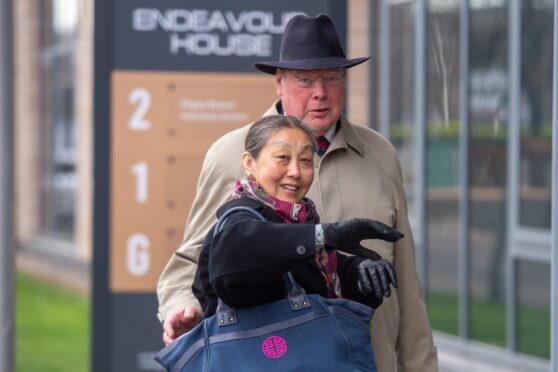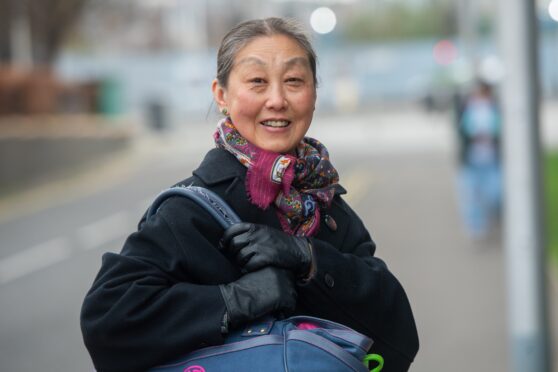How does gender, mass and age affect the speed of drivers on a race track?
That’s what schoolgirl Chloe Phillips hopes to determine in an ambitious project in which she has swapped the classroom for the screech of tyres and smell of petrol of a karting circuit.
You might expect school projects to involve lab experiments, research in the library or writing essays.
But Chloe, 17, a sixth year pupil at Grove Academy, is analysing the performance of six subjects – three males and three females aged between 12 and 50 – at ScotKart in Dundee.
Before timing their laps in the 160cc cars, she weighed, measured and questioned her subjects on their previous karting experience.
As well as the biological factors, Chloe will investigate the mechanical and psychological factors affecting speed on the race track.
She hopes her work will earn her a Scottish Science Baccalaureate, an award open to Higher and Advanced Higher students who conduct an interdisciplinary project alongside their studies.
Formula 1 fan Chloe’s project combines her love of physics and maths and with her passion for racing.
Watch: Chloe’s karting experiment
She told us: “I’ve been go-karting many times since I was 13. I’ve always been interested in how it works; acceleration and cornering and how to get the best lap time.
“I thought when I got the opportunity to do the baccalaureate, why not investigate how would you get the best lap time.”
Based on physics research she has already done, Chloe expects mass to be the determining factor on a straight track but has many other variables to take into account.
She will also interview a psychologist and Formula team students at the universities of Edinburgh, Glasgow and Strathclyde who design and build their own cars.
Chloe is one of only a few pupils across the country working towards the science baccalaureate this year, 12 of them from Grove. Nationwide there were only 92 entries for the National Qualification from local authority schools last year.
She said: “It’s not something you do every day, I didn’t even know it existed until this year.
“Normally in a school day the teacher tells you something and you learn it, whereas this is completely independent.”
Chloe came up with the idea of applying her STEM subjects to a real life situation.”
Teacher Pam MacLean
Chloe also hopes presenting her work to younger pupils in the school will encourage other girls continue with STEM subjects (science, technology, engineering and mathematics), in which females remain a minority.
Her teacher Pam MacLean said working on a Scottish Science Baccalaureate project prepares participants for university.
She said: “It has to be something they [the pupil] is very interested in and Chloe came up with the idea of applying her STEM subjects to a real life situation, which is ideal.
“Chloe is a go-getter and very much a stand-out student. She always works very hard and gives everything her all.”
Scottish Baccalaureates
The four Scottish Baccalaureates – in science, social sciences, expressive arts and languages – are awards for fifth and sixth year pupils studying for at least two Highers or Advanced Highers in the relevant subject area.
Launched in 2009, they were designed to equip young people with the skills, attitude and confidence needed for university or work.
An interdisciplinary project on a topic of the candidate’s interest must be completed, showing evidence of them using their initiative, taking responsibility and working independently.
Collaboration is encouraged with universities, colleges and industry.
